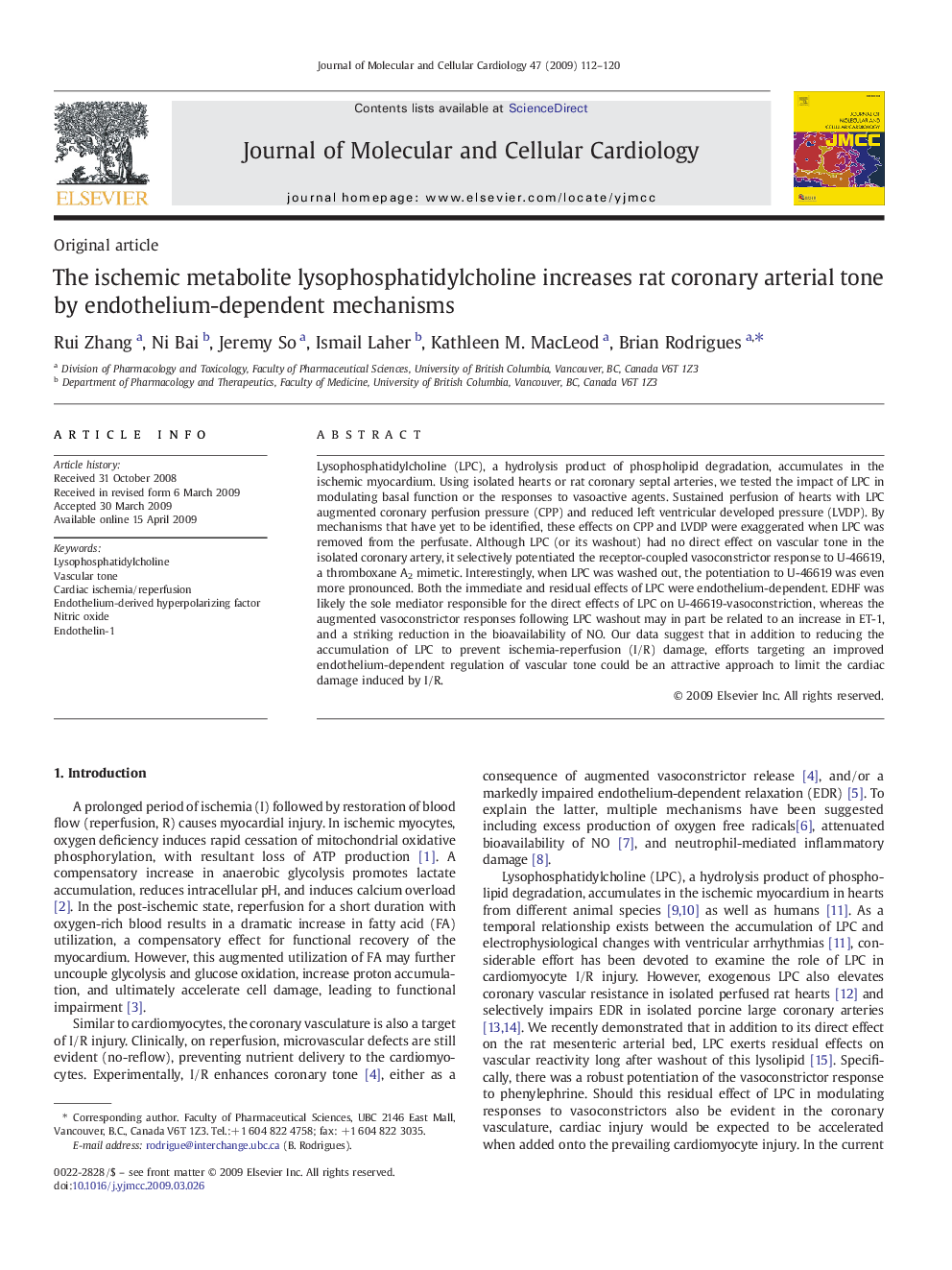| Article ID | Journal | Published Year | Pages | File Type |
|---|---|---|---|---|
| 10954129 | Journal of Molecular and Cellular Cardiology | 2009 | 9 Pages |
Abstract
Lysophosphatidylcholine (LPC), a hydrolysis product of phospholipid degradation, accumulates in the ischemic myocardium. Using isolated hearts or rat coronary septal arteries, we tested the impact of LPC in modulating basal function or the responses to vasoactive agents. Sustained perfusion of hearts with LPC augmented coronary perfusion pressure (CPP) and reduced left ventricular developed pressure (LVDP). By mechanisms that have yet to be identified, these effects on CPP and LVDP were exaggerated when LPC was removed from the perfusate. Although LPC (or its washout) had no direct effect on vascular tone in the isolated coronary artery, it selectively potentiated the receptor-coupled vasoconstrictor response to U-46619, a thromboxane A2 mimetic. Interestingly, when LPC was washed out, the potentiation to U-46619 was even more pronounced. Both the immediate and residual effects of LPC were endothelium-dependent. EDHF was likely the sole mediator responsible for the direct effects of LPC on U-46619-vasoconstriction, whereas the augmented vasoconstrictor responses following LPC washout may in part be related to an increase in ET-1, and a striking reduction in the bioavailability of NO. Our data suggest that in addition to reducing the accumulation of LPC to prevent ischemia-reperfusion (I/R) damage, efforts targeting an improved endothelium-dependent regulation of vascular tone could be an attractive approach to limit the cardiac damage induced by I/R.
Keywords
Related Topics
Life Sciences
Biochemistry, Genetics and Molecular Biology
Cell Biology
Authors
Rui Zhang, Ni Bai, Jeremy So, Ismail Laher, Kathleen M. MacLeod, Brian Rodrigues,
